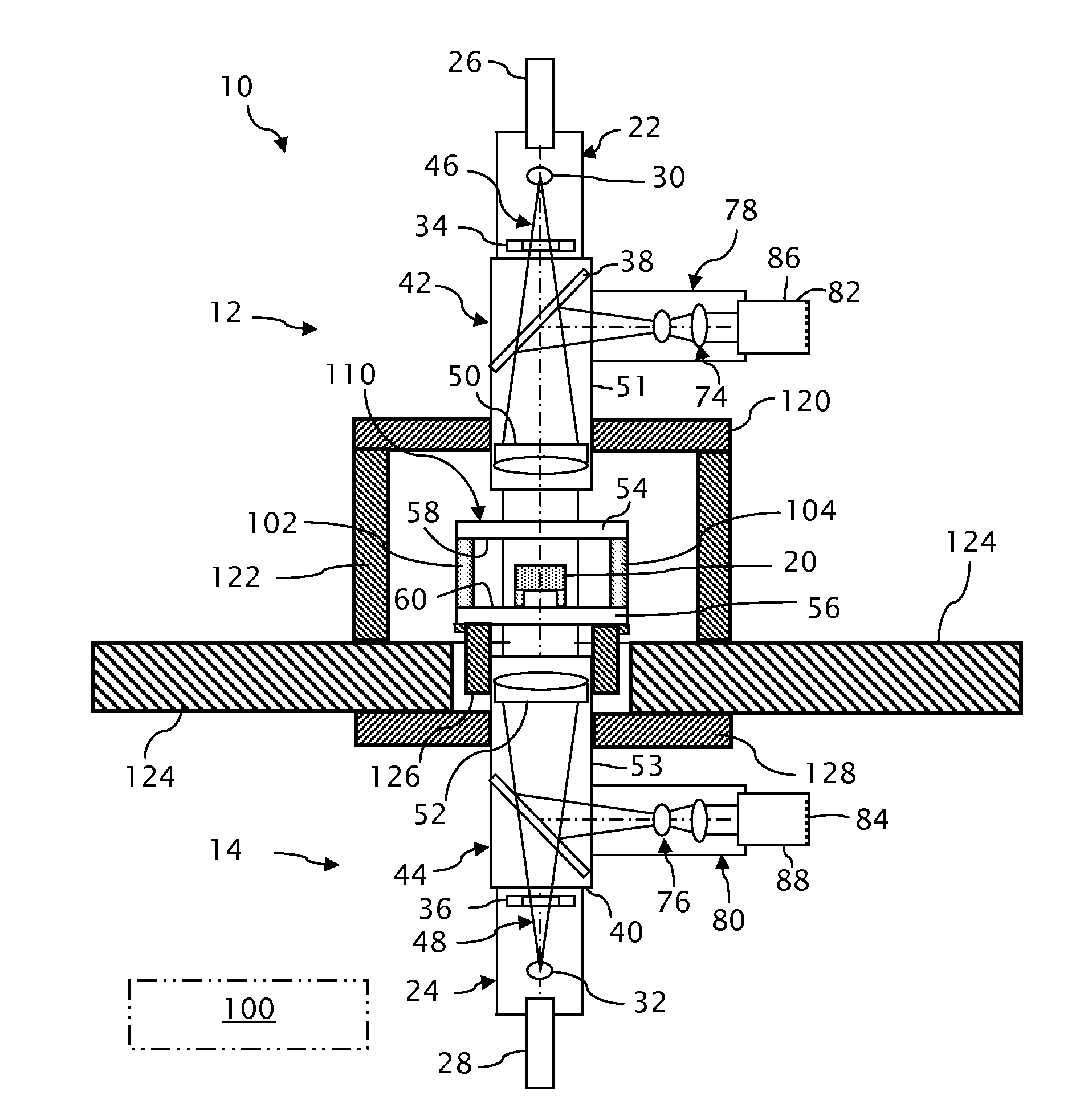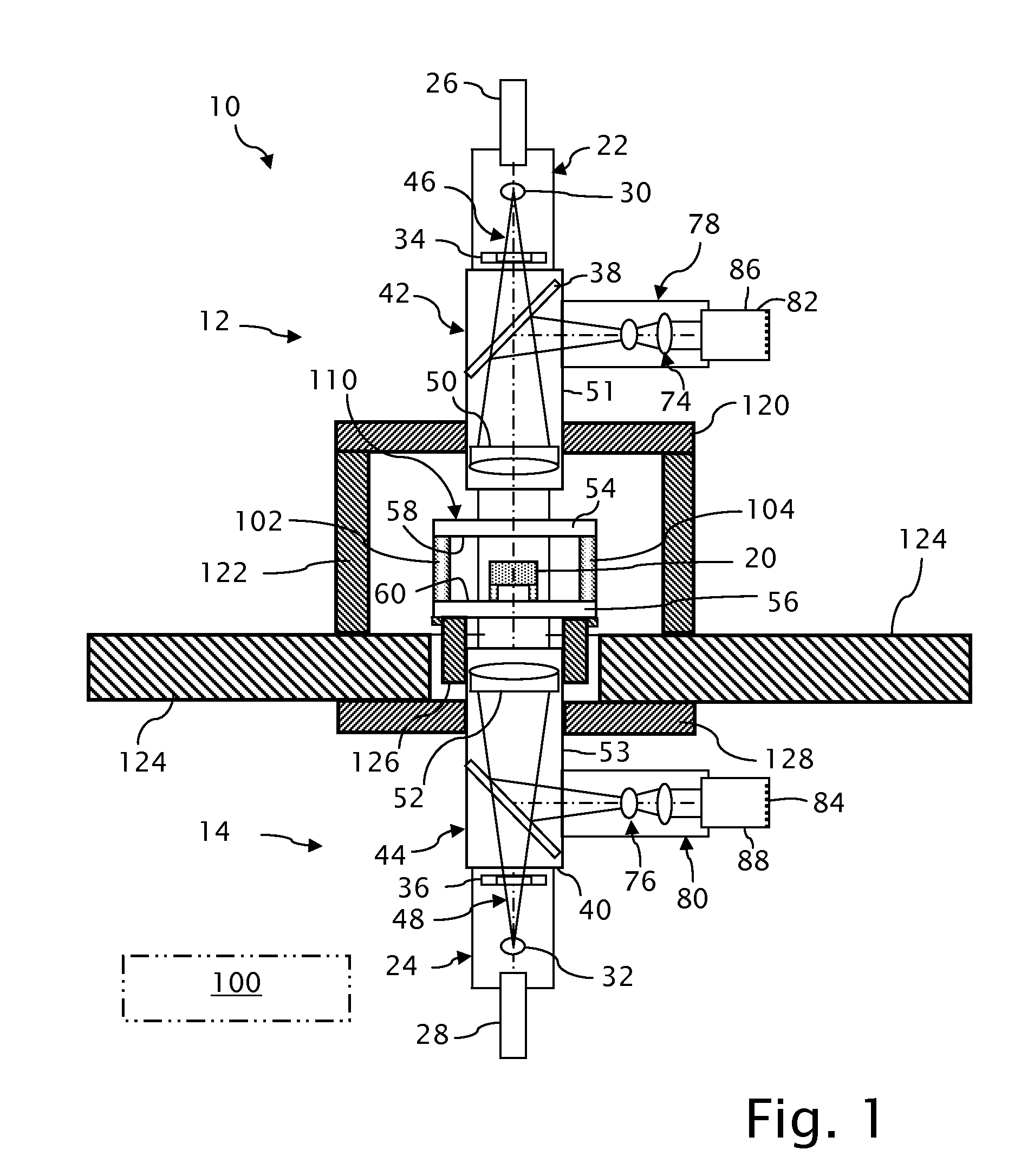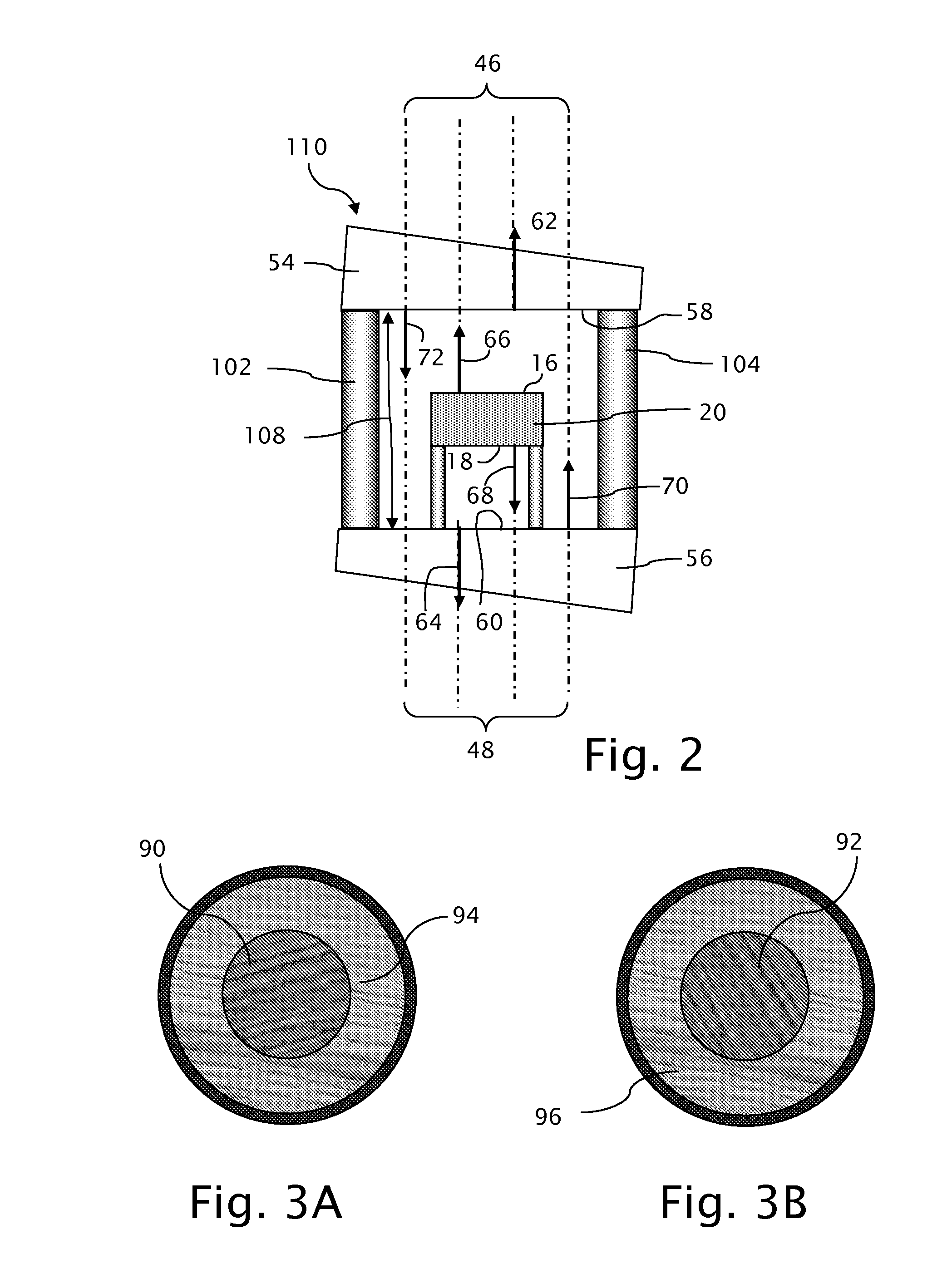Compound interferometer with monolithic measurement cavity
a monolithic measurement cavity and interferometer technology, applied in the field of compound commonpath interferometers, can solve the problems of difficult to achieve the measurement of the opposite side surface of opaque parts using conventional interferometry, and complicate the comparison between the measurements taken by the two measurement arms, so as to reduce undesirable cross influences
- Summary
- Abstract
- Description
- Claims
- Application Information
AI Technical Summary
Benefits of technology
Problems solved by technology
Method used
Image
Examples
Embodiment Construction
[0018]A compound common-path interferometer 10 as depicted in FIG. 1 includes an upper common-path interferometer 12 and a bottom common-path interferometer 14 for measuring opposite first and second sides 16 and 18 of an opaque test part 20 (see also FIG. 2). The opaque test part 20 can be a part that is made of materials that are not transmissive within the range of frequencies propagated by the common-path interferometers 12 and 14 or that is sufficiently diffuse to preclude the ordered transmission of such frequencies.
[0019]The upper and lower interferometers 12 and 14 include respective first and second illuminators 22 and 24, which can include customary light sources 26 and 28 and beam shapers 30 and 32 for outputting coherent first and second measuring beams 46 and 48. For example, the light sources 26 and 28 can be semiconductor diode lasers, and the beam shaping optics 30 and 32 can include beam expanders and conditioners for affecting distributions of light within the meas...
PUM
 Login to View More
Login to View More Abstract
Description
Claims
Application Information
 Login to View More
Login to View More - R&D
- Intellectual Property
- Life Sciences
- Materials
- Tech Scout
- Unparalleled Data Quality
- Higher Quality Content
- 60% Fewer Hallucinations
Browse by: Latest US Patents, China's latest patents, Technical Efficacy Thesaurus, Application Domain, Technology Topic, Popular Technical Reports.
© 2025 PatSnap. All rights reserved.Legal|Privacy policy|Modern Slavery Act Transparency Statement|Sitemap|About US| Contact US: help@patsnap.com



